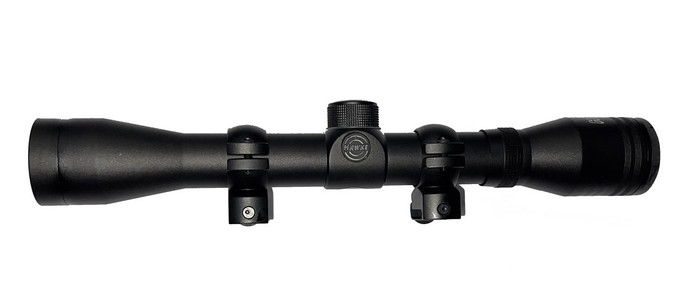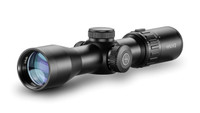Your scope is a precision instrument that deserves a high level of care. Do not attempt to
disassemble or clean the scope internally.
Keep the protective lens covers in place when the scope is not in use.
The external optical surfaces should be wiped clean occasionally with the lens cloth provided
or an optical quality lens paper. Remove any external dirt or sand with high pressure air and a
soft brush to avoid scratching the lens finish.
Wipe the scope with a damp cloth, then with a dry cloth, then go over the metal section of the
scope with a silicone cloth in order to protect the scope against corrosion.
Always store the scope in a moisture-free environment. Avoid storing the scope in places such
as the passenger compartments of vehicles on hot days as the high temperatures could
adversely affect the lubricants and sealants. Never leave the scope where direct sunlight can
enter either the objective or the eyepiece lens as damage may result from the concentration
(burning effect) of the sun's rays.
Mounting the scope on your crossbow
Support your un-cocked crossbow on a sturdy surface and position a good quality set of rings
on the crossbows scope rail. Tighten up the side bolts.
Determine the best eye relief. This is achieved when the crossbow is held in your normal
shooting position and a full sight picture is viewed without straining or stretching your head
or neck. This optimum adjustment may also require the rings to be moved along the scope rail.
With the top ring screws still loosened slightly, rotate the scope so that the horizontal
crosswire is parallel with the crossbow string and limbs, when viewed through the scope.
Next, tighten the top ring screws and double check that the scope hasn't moved from its
optimum position.
Adjusting the ocular lens
The ocular lens housing has a fine focus adjustment that quickly adjusts to make the reticle as
sharp as possible when viewed through the scope.
Set the focus of the reticle in similar light conditions and at the approximate range at which
you expect to use your scope.
Try not to stare at the reticle to get it in focus; it should be sharp the moment you glance
through the scope.
Initially zeroing the scope
Choose a place to shoot your crossbow with a safe backstop and ensure that no one can step
unseen into or in front of the firing line.
Initially, place a paper target on the backstop at about 10 yards and take a shot at its center.
Remove the dust covers from the windage and elevation turrets of the scope and make a
suitable adjustment to the turret to bring the point of impact (POI) closer to the point of aim
(POA).
For example - if the arrow has landed lower than required; rotate the elevation turret counter
clockwise to raise the point of impact. A high impact point requires a clockwise adjustment.
Both turrets move the POA a 1/2 minute of angle per click - this is equal to a 1/2 inch at 100
yards or a 1/20th of an inch at 10 yards.
After achieving an approximate zero at 10 yards, move back to a measured 20 yards and
continue adjusting the turrets until the top cross of the reticle and the point of impact are the
same. At this range each click equals 1/10th of an inch.
When you are happy with the 20 yard zero, replace the turret covers.
- _marketplace:
- AMAZON,EBAY










